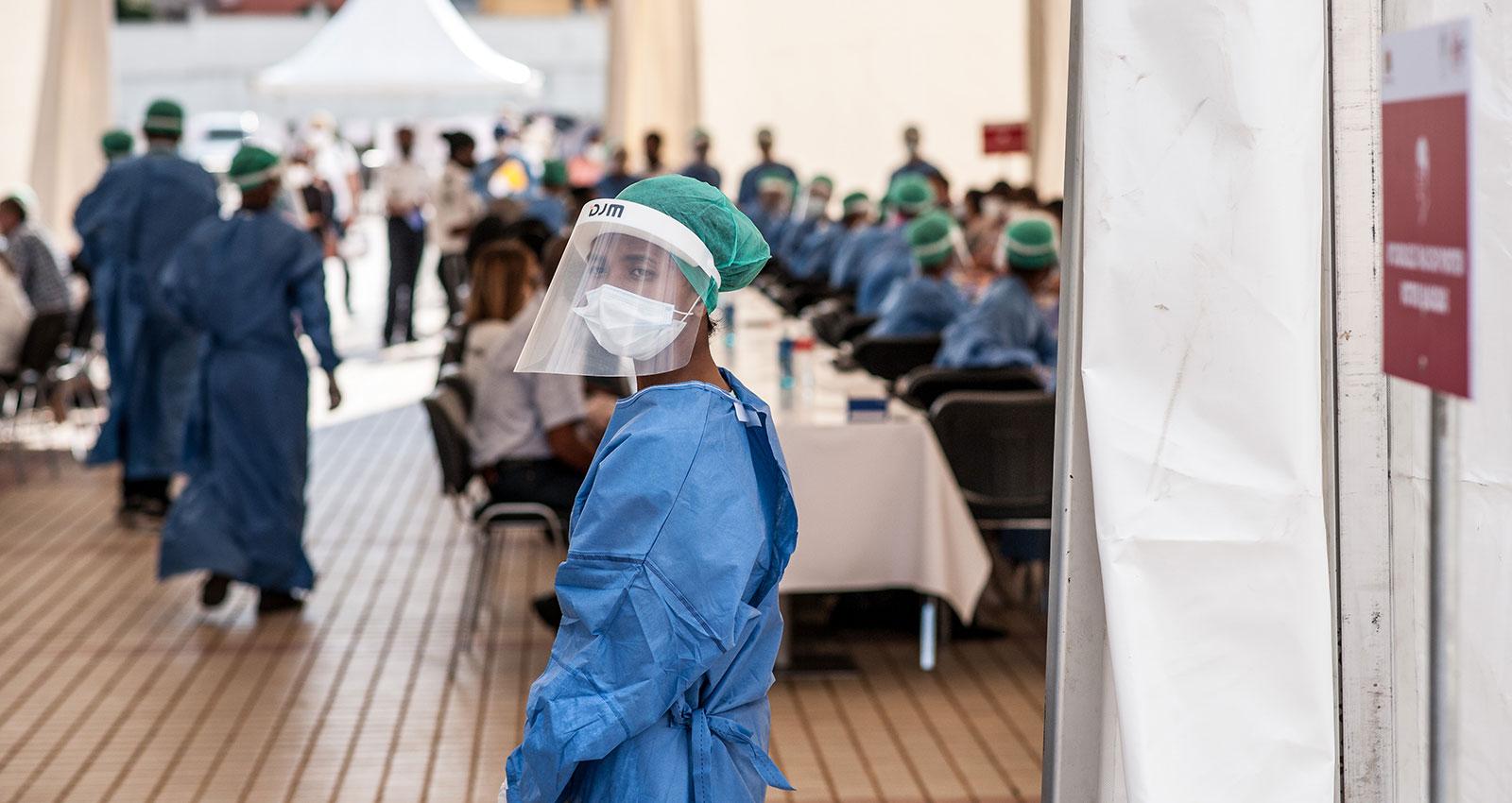Surveillance systems were instrumental in the World Bank’s historic early response to the COVID-19 outbreak. Support to reinforce and expand surveillance systems emphasized linkages between contact tracing, case management, and laboratories and very likely contributed significantly to responding to the spread of the virus.
A recent IEG evaluation of the World Bank’s early health and social response to COVID-19 identifies successful endeavors to boost surveillance systems and points to innovative data approaches that may be relevant going forward.
Here is the good, the not yet known and the absent in surveillance systems in the World Bank’s early response to the pandemic.
The good
The World Bank was able to channel its support for a rapid expansion of surveillance systems through various instruments. Multiphase program approach health financing, regional projects, contingencies built into existing projects, and policy financing all supported surveillance systems across countries.
This support was consistently well aligned with emergency needs. The Bank provided active support for case surveillance, contact tracing, rapid diagnosis and management, and quarantine measures. This support likely helped strengthen surveillance systems and associated laboratory networks in countries such as India and Haiti. In Senegal, community-based disease surveillance and multistakeholder engagement supported community health workers and volunteers to detect COVID-19 and report cases to health facilities and local governments.
Regional projects were an especially important driver for the expansion of surveillance of COVID-19. The World Bank and its partners leveraged pre-pandemic regional projects to provide structures that accelerated their response to COVID-19 and expanded disease surveillance. A recipient of earlier support from the World Bank, the Economic Community of West African States was well prepared to aid countries when the pandemic struck. The Africa Centre for Disease Control and Prevention, despite being a newer organization, quickly developed convening structures for collaboration for disease surveillance with support from a World Bank regional project. In East Africa, governments deployed lab technicians, assessors, and disease surveillance officers trained through the East Africa Public Health Laboratory Network to be at the front line in COVID-19 rapid response teams conducting testing and contact tracing.
The not yet known
The World Bank’s early support to surveillance systems covered over 90% countries evaluated in IEG’s report and often focused on basic functions—like reinforcing laboratories— which were important in the immediate crisis. 59% of health projects introduced innovations, usually for data on surveillance or case management. The Bank’s early support also comprised strengthening institutional capacities to manage crises and build resilience against future shocks with an emphasis on expanding disease surveillance.
While the support provided is relevant, it does not ensure the sustainability of the progress achieved so far or the long-term effectiveness of the innovations introduced during the initial emergency. The World Bank, its partners, and client countries should build on the efforts deployed during the pandemic to ensure longer-term systems strengthening. For now, the results from the World Bank’s early response to strengthen surveillance systems are yet to be seen.
The Absent
The World Bank’s experience revealed gaps in its pandemic preparedness that should be addressed.
A challenge was supporting the continuation of essential health services during the crisis and ensuring emergency actions reached communities and vulnerable groups. The focus on the health emergency and the rapid need to develop population level support diverted attention from essential health services, such as maternal and child health care.
During the pandemic, previously developed nutrition platforms were utilized by communities in Uganda and Senegal, and, in West Africa, the World Bank trained One Health agents building on community-based surveillance support set-up before COVID-19. Unfortunately, these cases were not the norm. Successfully reaching the community level, delivering targeted communication messaging, continuing services, and ensuring a wide engagement in case management was especially challenging where previous capabilities were not developed. Future investments in surveillance should strengthen broader health information and communication systems; establish better connections between national surveillance, essential health services, and community level platforms reaching households; and set up mechanisms to track cases and the quality of the support received by vulnerable groups.
Another challenge was monitoring the response across sectors. The real-time measurement of the success of emergency actions and establishing mechanisms to gather beneficiary feedback on emergency services was limited and rarely considered part of developing surveillance systems. The focus of surveillance systems was on tracking cases, but less so on tracking the success of response measures in health or other sectors.
The rapid phone surveys undertaken by countries with World Bank support provided useful evidence on social protection benefits, household finances and access to health care, but did not help understand the success of emergency health services in communities. Indicators often measured materials received, such as equipment, and in some cases, outputs related to delivered service. Going forward, it is important to develop a dashboard of information on the success of response actions in health and other key sectors. The challenge of monitoring during the crisis reinforces the need to invest in better routine data systems — which were used in some countries in Africa and Latin America— for adaptive implementation of country support, such as geo-enabled monitoring, SMS, and dashboards.









Add new comment